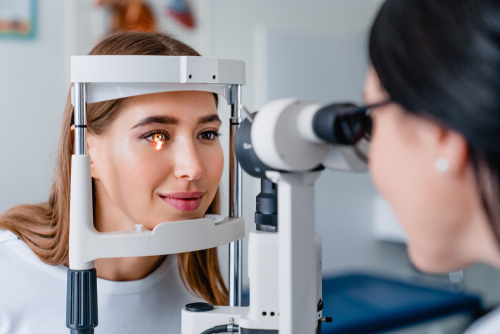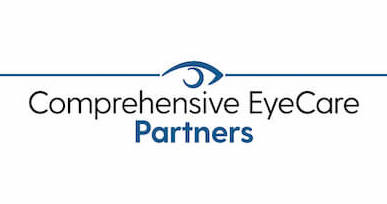
While most people know they should visit their primary care doctor for a checkup once a year and their dentist for cleanings twice a year, they may be unsure about how often to schedule a routine eye exam. Just as medical checkups protect your health and dental cleanings protect your teeth, routine eye exams protect the quality of your vision and the health of your eyes.
Keep reading to learn how often you may need to schedule an eye exam with your eye doctor!
How Do I Know How Often I Need to See My Eye Doctor?
The frequency of routine eye exams recommended by eye doctors varies, depending on many factors. Some of these factors may be your age, overall health, and any existing vision problems.
Generally, it is recommended that you have an eye exam:
- Every two years for people in their twenties and thirties, as well as school-aged children with no vision problems
- Every one to two years for people in their forties with no vision problems
- Annually for contact lens wearers and people over the age of sixty-five
- As required by your eye care professional, if you have a vision problem, a family history of eye disease, or other vision risk factors
What Is the Importance of Routine Eye Exams?
Routine eye exams ensure you have the most up-to-date vision prescription and can detect vision-threatening eye conditions, like glaucoma, retinal holes, and cataracts. The early detection and diagnosis of these eye problems can lead to better treatment outcomes.
Routine eye exams can also detect early signs of serious diseases like high blood pressure and diabetes. Scheduling recommended eye exams as part of your health care regimen is as necessary as regular appointments with your doctor and dentist.
What Happens During a Routine Eye Exam?
When you come for a routine eye exam, your eye care provider performs a series of tests to check both the strength of your vision and the health of your eyes. These tests include:
Visual Acuity Test
This test determines how well you can see, with and without your corrective eyewear. During this test, you will be asked to read a series of letters that progressively get smaller.
Depending on the test results, your eye doctor may also perform a refraction test to provide you with glasses or a contact lens prescription so you can see your best.
Visual Field Test
This test measures your peripheral vision. For this test, your eye care provider will ask you to follow an object with your eyes as it moves in various directions.
Color Vision Test
This test checks for color blindness. You will be shown a series of images made up of tiny dots and be asked to identify the number contained within the images.
Ophthalmoscopy and Slit-Lamp Exams
Your eye care provider uses these devices to examine the structures inside your eye, including the cornea, lens, retina, optic nerve, and surrounding blood vessels, for signs and symptoms of potential degeneration.
To perform these last two exams, your eye care provider will dilate your pupil using special drops to better see the structures inside your eyes. The effects of dilation can last several hours and may cause blurred vision and increased sensitivity to light.
Typically, a routine eye exam takes about thirty minutes to an hour to complete. The tests performed during a routine eye exam are painless and non-invasive.
The information about your eyes these tests provide ensures your eye care professional can offer you the treatments and care you may need. Routine eye exams ensure you maintain both the quality of your vision and the health of your eyes!
Is it time for you to have a routine eye exam? Schedule an appointment at Shepherd Eye Center at one of our 5 locations in Las Vegas or Henderson, NV, today with one of our experienced eye care providers!


